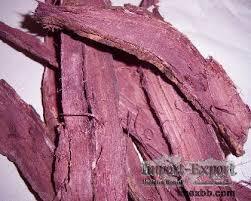 |
Home > Offers to Sell > Health & Beauty > Other Medicine > Others
| Contact: | Ms. Lisa T. Mike |
|---|---|
| Company: | Walton Biotech Co., Ltd |
| 5192 Chapin St | |
| Melbourne 3000 | |
| Australia | |
| Phone: | +1 903-484-6781 |
| E-Mail: | |
| Date/Time: | 11/2/20 23:32 GMT |
Mimosa Hostilis Root Bark (POWDERED) Weight 1000grams
We wholesale and retail Mimosa hostilis root bark powder (MHRB) Powder, Shredded and Inner Whole Rootbark. It sustainable and wild harvested from South America.
Origin: Brazil
Family: Fabaceae
Genus: Mimosa
Species: Mimosa hostilis (syn. Mimosa tenuiflora (L) Willd)
Common names:: Tepezcohuite, Jurema, Cabrero, Carbonal, Jurema Preta, Calumbi, Black Jurema, Vinho de Jurema, Yurema
Minimum order is 1kg
Payment: Bank Transfer and Bitcoin acceptable.
Our Mimosa hostilis root bark powder (MHRB) is well kown for it high DMT content
And also High Quality Tie-dye powder for T-Shirts, Arts and Crafts, Paint. Condition is New, Fresh all organic,great for all your fabric needs. vibrant colors. Get your order in as few as 4-10 days worldwide
The properties: In Brazil, Mimosa hostilis is widely used in browsing for sheep and goats, or to make tea from it, and it is attributed with qualities for skin healing, after sunburns, accidental exposure to fire, as well as for stomach ulcers and use in cosmetics. Additionally, it acts as an analgesic, with hours of lasting relief and expedited tissue recovery. The bark is also recommended to counteract exhaustion and debility, and has been shown to stimulate the immune system. Other medicinal qualities of Mimosa hostilis are antimicrobial, analgesic, antifungal, cicatrizing (to heal by scar formation), regenerative, anti-inflammatory, and anti-aging.
What Sets Ours Apart: Our Mimosa hostilis (Tepezcohuite) is harvested by a community of indigenous farmers belonging to the local tribes in Brazil. They employ traditional production methods and do not use any chemical fertilizers or pesticides. Although most of the Mimosa hostilis is harvested/collected from the wild in the more than 370 hectares of land owned by these farmers (the Tepezcohuite tree is very abundant in this region since it grows there naturally), they do replant sufficient trees to ensure a sustainable and ecologically friendly production. Other plants harvested by this community are mango, noni, moringa, stevia and salvia divinorum.
The History and the Habitat: For many centuries, some of the Maya tribes in Brazil used the Hostilis Mimosa root bark, or "Tepezcohuite" to treat skin diseases. It is also known to be an excellent body paint or natural coloring agent for textiles. Also in South America did this tree play a major role in the traditions of different indigenous tribes. In Brazil, for instance, it is known under the name of Jurema Preta.
The wood from this tree is considered one of the strongest and most durable available on the market. For this reason, it was called by pre-hispanic cultures "tepezcuahuitl", which derives from the words “tepus” (iron) and cuahuitl (tree), referring to the hardness of its wood.
The Mimosa hostilis tree is found growing in the northeast region of Brazil, and found as far north as Mexico, including El Salvador, Honduras, Panama, Colombia and Venezuela. It prefers lower altitudes but can be found growing as high as 1000m. Contact us anytime
Tel/Telegram/WhatsApp: +19034846781
Minimum Order: 1 kilograms
SOURCE: Import-Export Bulletin Board (https://www.imexbb.com/)
Similar Products:Not exactly what you are looking for? Post an Offer to Buy!
![]()
© 1996-2010 IMEXBB.com. All rights reserved.
|
|
|






